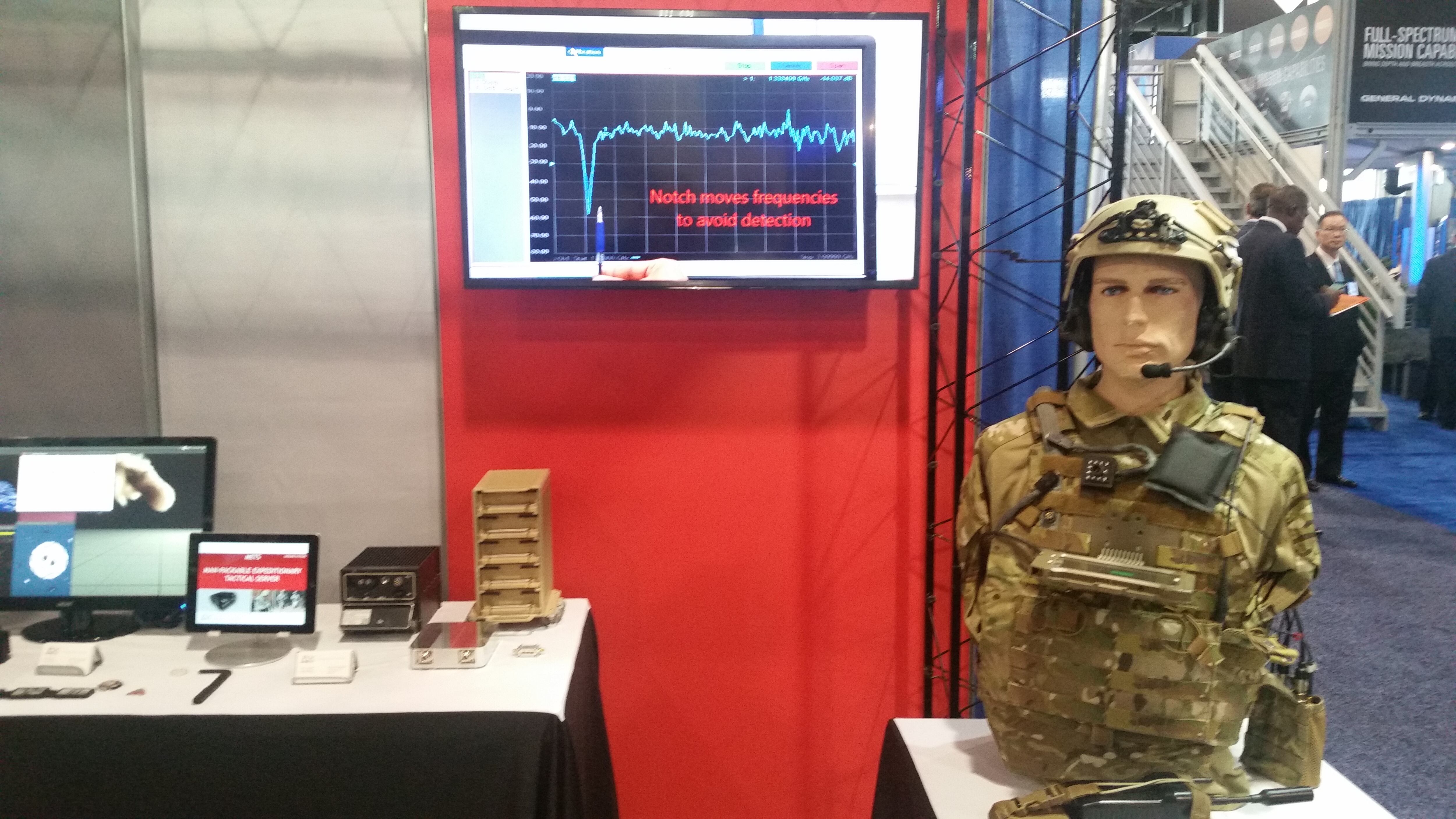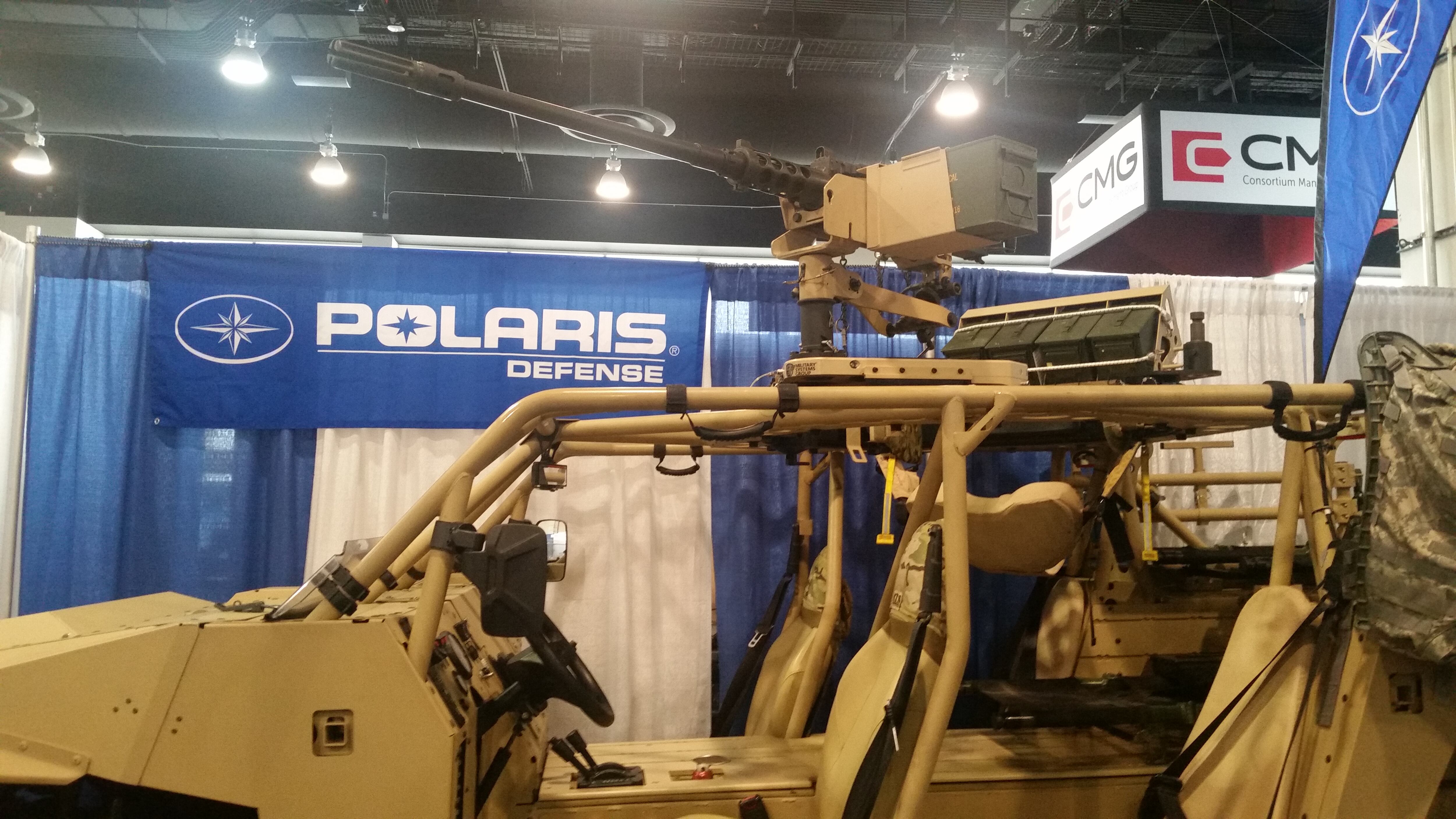Several exhibitors at the Air Force Association’s annual conference brought their latest tech and gadgets for battlefield airmen. Here’s a look at some of the offerings.
’Wearable network’

Physical Optics Corporation brought WEARNET, a wearable personal network that includes a camera hooked up to a GPS and radio, all of which can transmit live the wearer’s actions and receive tactical feeds from aircraft sensors overhead.
The system is intended to compete against similar but heavier systems from competitors, which require more batteries and wires, said Christian Veeris, vice president of business development at POC.
“In the 21st century, we’ve digitized the command post,” Veeris said. “Everybody has satellite communication. The White House can sit there and watch the raid on Osama Bin Laden. So, the big push is to now give that same technology and situational awareness to the guy on the ground who’s actually shooting, moving and communicating.”
WEARNET is still in development, Veeris said.
“There’s a couple companies out there that have versions of this, but they’re probably two generations removed,” he said.
The ultimate goal is to get rid of wires and cables, Veeris said.
But the problem then becomes a ground operator who has all the gadgets but is weighed down by a bag full of batteries, Veeris said. It’s not feasible for personnel in the field on a 96-hour mission to carry five different batteries for ten different devices, he added.
“We haven’t gotten there yet,” he said. “There are technical solutions out there, but they are a little bit power hungry.”
Helmet Mounted Trackers
Thales brought CENTAuR, a helmet mounted display for ground operators that’s still in the prototype phase, but will mirror the capabilities of helmet mounts already in use by pilots to track friendlies and enemies on the ground.
CENTAuR — or the Communication-Enabled Networked Tactical Augmented Reality system — is still constrained to development, said Michael Sheehan, president and chief executive officer of Thales Defense & Security, Inc.
“The biggest technical challenge is how do you track head motion without the canopy overhead with a reference system,” Sheehan said.
Thales’ Scorpion is a similarly designed helmet mounted display that’s already fielded to crew members in the A-10 Warthog and AC-130 gunship, he added. But those pilots have the benefit of an overhead canopy in their cockpit to track head movement. Without that focal point, the helmet has no way of knowing where the ground-based user is looking, Sheehan said.
“Most of the commercial applications are focused on putting a display in front of the eye, not attacking the head tracking problem. That’s the harder problem,” Sheehan said. “They have brilliant displays, but they really aren’t tracking where the head is looking, and that’s key.”
All-terrain Personnel Recovery

Polaris Defense brought the Dagor vehicle, which is the company’s larger off-road alternative to traditional all-terrain vehicles.
“The whole concept of the Dagor is that it’s more mobile off-road like a Humvee, but bigger than an MRZR [ATV],” said Michael Moore, a Polaris consultant.
The Dagor is intended to serve the mission of personnel recovery in off-road environments, like an ATV, but with considerably more room for the crew, like a Humvee, Moore said.
“If you think of what a Humvee can do off-road at maybe five to 10 mph, this thing can do that and more at 30 to 35 mph,” Moore said. “That’s the main difference. From our perspective, it’s certainly a lot more capable off-road. It’s not armored like an up-armored Humvee.”
The Dagor can fit up to a crew of nine, Moore said. Additionally, up to two Dagors will be able to be internally transported on a CH-47 Chinook, he added. The vehicle also can be sling-loaded on a Chinook or a UH-60 Blackhawk.
The Air Force has made more calls in recent years for ground mobility, Moore said.
“So, we think this is a good fit. I mean it’s fielded, and it’s certified for air drop and transport.”
The Dagor is a vehicle that Polaris purpose-built for special operations forces, Moore said. Currently, it’s fielded to certain special operations units, as well as the Army’s 82nd Airborne Division, he added.
Kyle Rempfer was an editor and reporter who has covered combat operations, criminal cases, foreign military assistance and training accidents. Before entering journalism, Kyle served in U.S. Air Force Special Tactics and deployed in 2014 to Paktika Province, Afghanistan, and Baghdad, Iraq.





